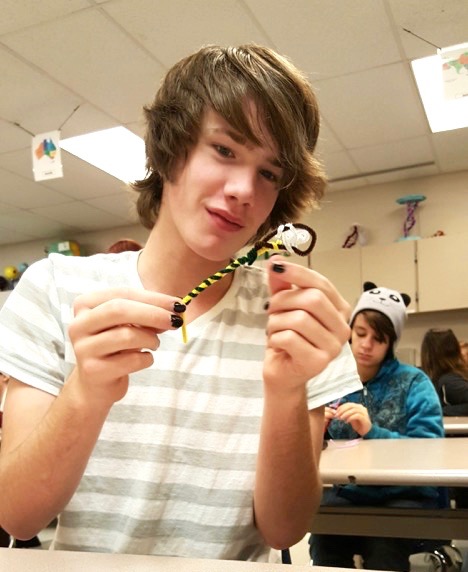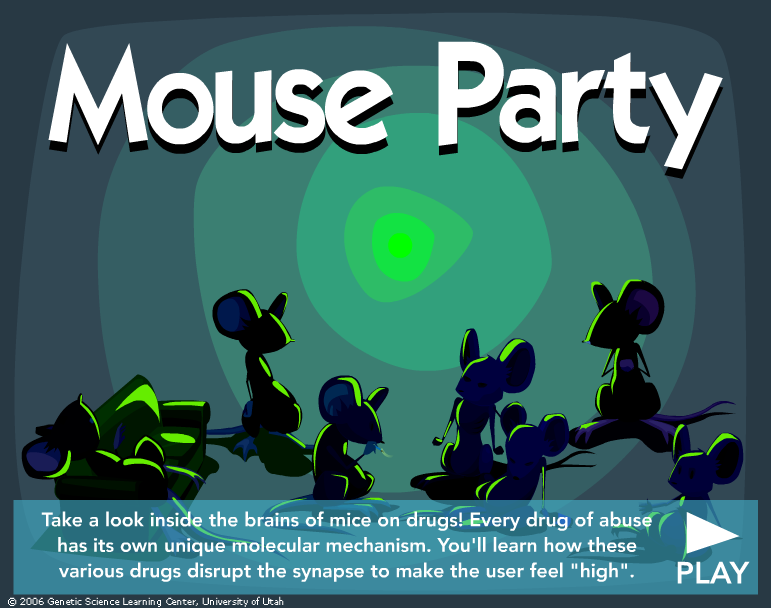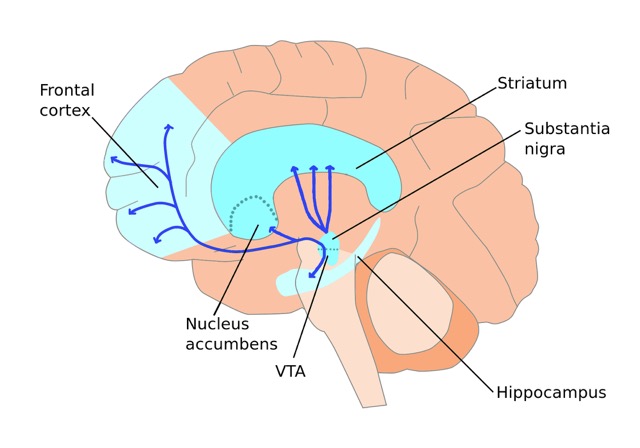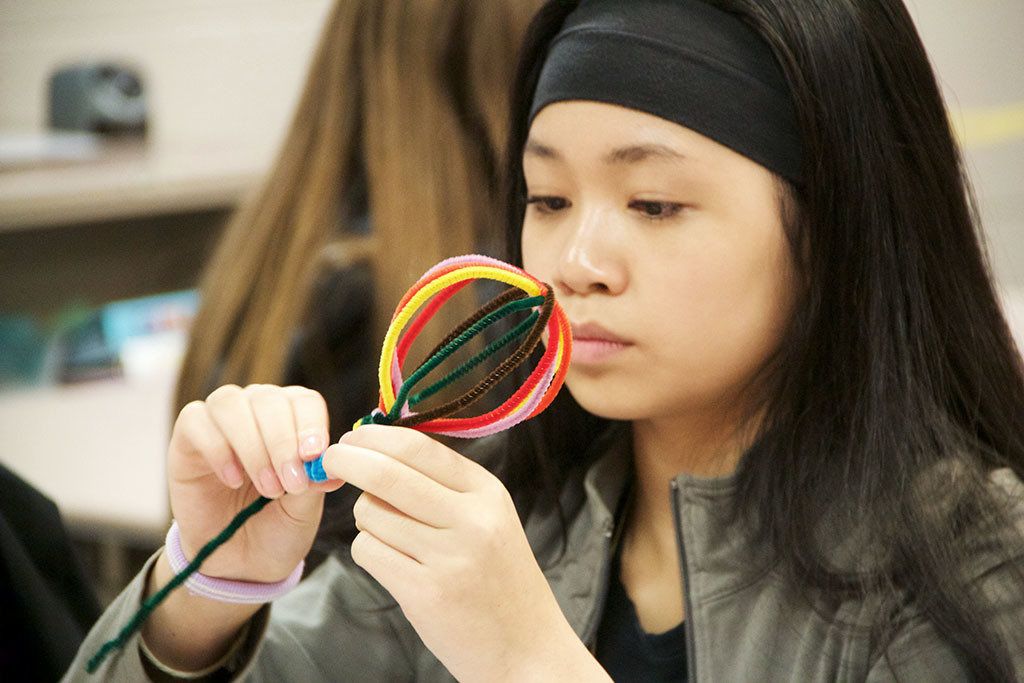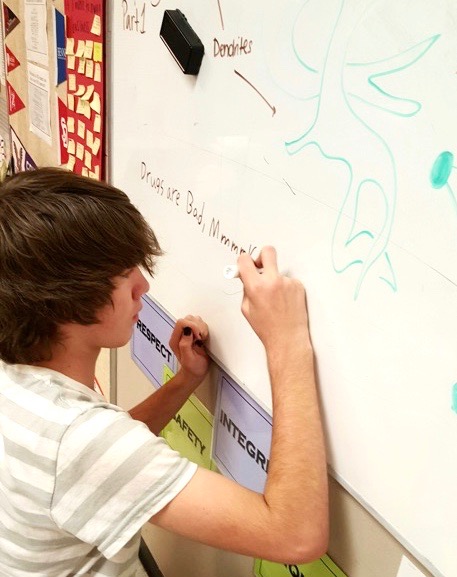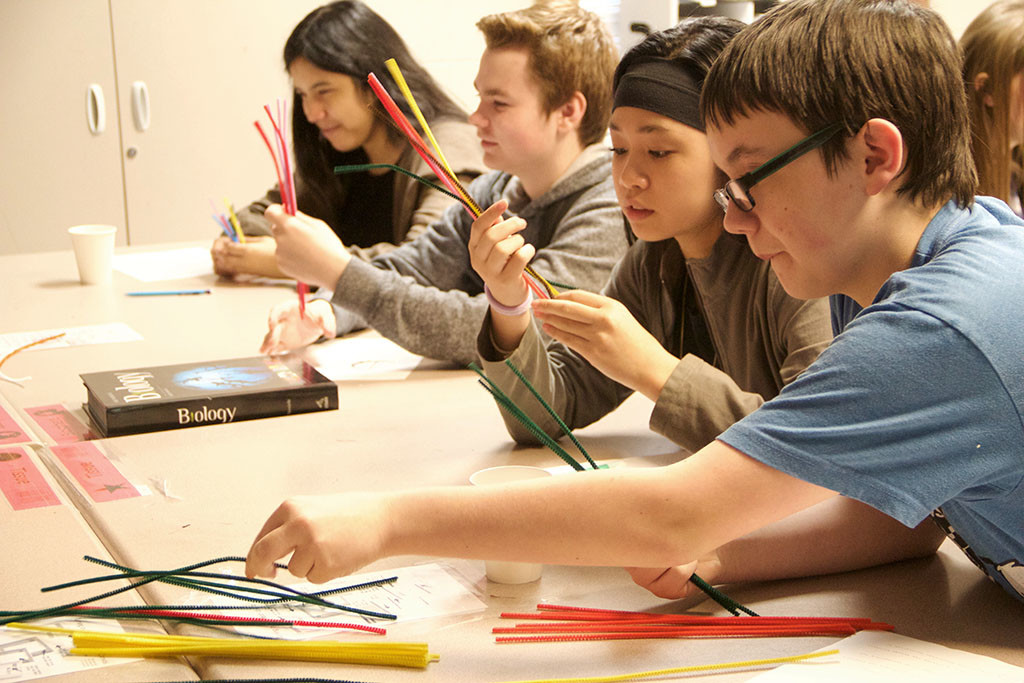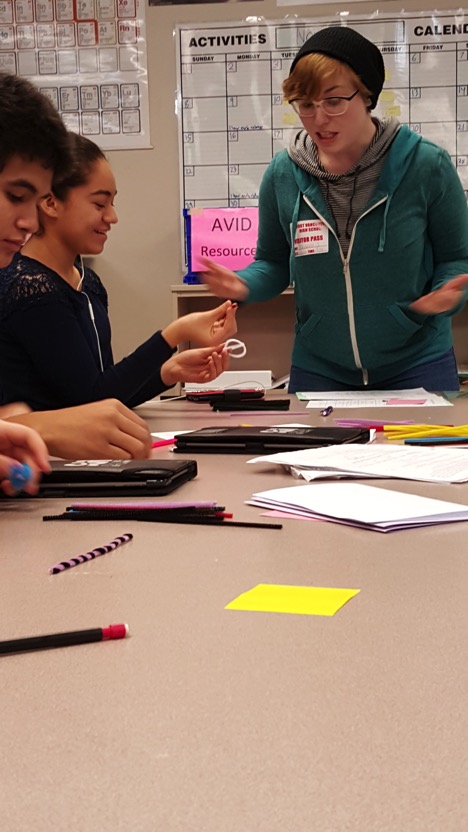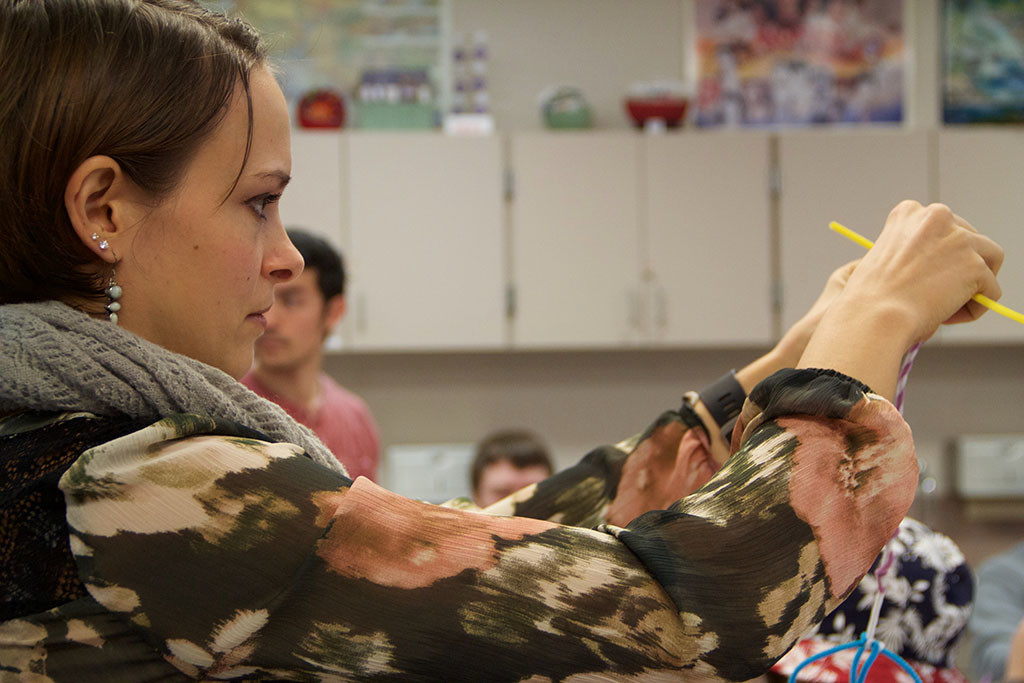NW Noggin returned for our third Trapper Friday at Fort Vancouver High School, where at first we saw (unsurprisingly, at 7:30am ?) a sea of tired faces. However, the excitement grew as students realized that “the brain people are back!”
Some students, of course, still weren’t impressed. Yet as the tardy bell rang, one word woke up everyone: Drugs. Well, what about drugs? And what do drugs have to do with our brains?
We introduced Fort students to the online Mouse Party, an excellent educational tool developed by the University of Utah, to help explain how many drugs, including cocaine, methamphetamine, alcohol, nicotine and the chemicals in marijuana, act on and ultimately change specific parts of the brain, including areas critical for the experience of motivation, and anticipation, which is why these drugs can be so addictive.
This is due in part to a neurotransmitter called dopamine, which neurons in certain critical brain networks use to communicate with each other across synapses. Dopamine is released when we encounter stimuli that predict the delivery of some felt reward, and that release provokes feelings of anticipation, and motivates our behavior.
Drugs typically flood synapses with dopamine, and chronic use can make these synapses less responsive, ultimately reducing our sense of pleasure, anticipation, and motivation to most everything. Yet stimuli associated with the drug can keep forcing us to impulsively use more drug, despite our best efforts to stop…
Some drugs, like alcohol and marijuana, are enjoyed legally by adults. But risks to developing brains are far greater, which is why excessive drug use should be avoided by everyone, but especially by teenagers. No one wants to lose their drive for friends, sports, skills, family, jobs, and other positive pursuits, and instead become dependent on drugs for motivation (or as one student put it, “Drugs are bad (well, they can be, if not used in moderation, and after adolescent brain development), MmmmK…” :).
After Mouse Party, and some good discussion, students were given pipe cleaners to create their own interpretations of a neuron. Neurons are some of the most diverse cells in our bodies, structurally, so whatever they created likely has an analog in the brain…
For some students, it became a friendly – but motivating! – competition…
As Noggin volunteers, we enjoyed making our own brain cells, and taking the chance to talk with students in smaller groups about how our brains are wired up to seek pleasurable experiences, and rewards – some healthier in the long term than others…
Thanks again to everyone at Fort Vancouver for welcoming us to school!
Text written in part by NW Noggin Fort Vancouver teaching lead Angela Gonzalez (from WSU Vancouver); photos by Angela Gonzalez and Rosie Salice (also from WSUV)



